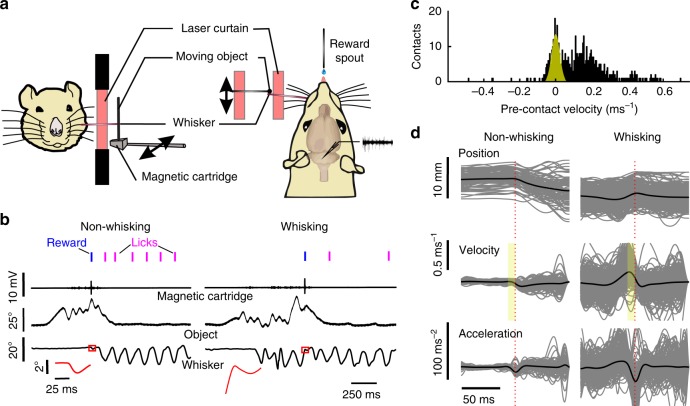Fig. 1.
Active touch task for measuring sensory gating. a Schematic showing behavioral setup. The head-fixed animal was positioned next to an object, which was moved in a rostro-caudal trajectory parallel to the animal’s snout. Whisker contacts were rewarded with a drop of water from a reward spout. Whisker movements and object trajectories were monitored using a laser curtain, whereas whisker contacts were detected by a vibration-sensitive magnetic cartridge. b Examples of whisker contacts during non-whisking (left) and whisking (right) epochs. Blue lines show rewarded licks, whereas magenta lines denote consummatory licks. Insets (red squares) show whisker trajectories around object contact, which are shown enlarged in red. c Pre-contact velocities (10 ms preceding contact) were binned to yield bimodal distributions. The peak around zero was fitted with a Gaussian function and pre-contact velocities falling within double the standard deviation defined as non-whisking (yellow shaded area). d Contact-triggered traces of whisker position, velocity, and acceleration shown for non-whisking (left) and whisking (right) epochs

